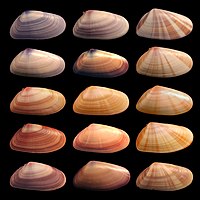
Photo from wikipedia
The importance of morphology in the phylogenomic era has recently gained attention, but relatively few studies have combined both types of information when inferring phylogenetic relationships. Sanger sequencing legacy data… Click to show full abstract
The importance of morphology in the phylogenomic era has recently gained attention, but relatively few studies have combined both types of information when inferring phylogenetic relationships. Sanger sequencing legacy data can also be important for understanding evolutionary relationships. The possibility of combining genomic, morphological and Sanger data in one analysis seems compelling, permitting a more complete sampling and yielding a comprehensive view of the evolution of a group. Here we used these three data types to elucidate the systematics and evolution of the Dionycha, a highly diverse group of spiders relatively underrepresented in phylogenetic studies. The datasets were analyzed separately and combined under different inference methods, including a novel approach for analyzing morphological matrices with commonly used evolutionary models. We tested alternative hypotheses of relationships and performed simulations to investigate the accuracy of our findings. We provide a comprehensive and thorough phylogenetic hypothesis for Dionycha that can serve as a robust framework to test hypotheses about the evolution of key characters. We also show that morphological data might have a phylogenetic impact, even when massively outweighed by molecular data. Our approach to analyze morphological data may serve as an alternative to the proposed practice of arbitrarily partitioning, weighting, and choosing between parsimony and stochastic models. As a result of our findings, we propose Trachycosmidae new rank for a group of Australian genera formerly included in Trochanteriidae and Gallieniellidae, and consider Ammoxenidae as a junior synonym of Gnaphosidae. We restore the family rank for Prodidomidae, but transfer the subfamily Molycriinae to Gnaphosidae. Drassinella is transferred to Liocranidae, Donuea to Corinnidae, and Mahafalytenus to Viridasiidae.
Journal Title: Molecular phylogenetics and evolution
Year Published: 2021
Link to full text (if available)
Share on Social Media: Sign Up to like & get
recommendations!